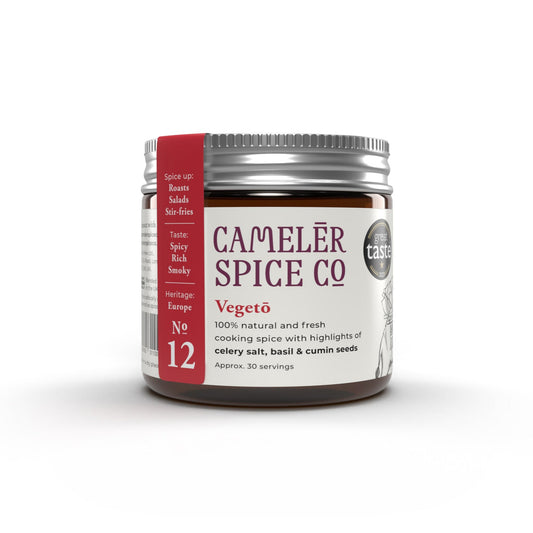
Collection: Paprika
(Also known as Hungarian pepper and Pimento/Pimentón)
What does paprika taste like?
Bittersweet, earthy and fruity. This powdered condiment is derived from special types of dried and ground ripe pepper. Paprika is a very important ingredient in Hungarian cooking, with the slightly sweet Hungarian paprika variety.
In Mexico, the concept of hot chiles and the diverse use of chiles as a vegetable has become widespread, with a few exceptions. However, in Europe, this idea never really gained popularity. In Europe, two common versions of chiles are found. The first type is sweet chiles, which are roasted (as seen in Spanish piquillo chiles). The second type is dried and ground chiles, known as paprika in Hungary, Türkiye, and the Balkan countries, and Pimentón in Spain. They are both quite different, come in sweet and piquant versions, and are integral to their respective cuisines.
In Spain, two areas produce pimento. A sweet version is made from the flora "capsicum annuum" pepper in the Guadalentin Valley, Murcia. It is used throughout the country to flavour and colour sausages, rice dishes, and all sorts of seafood and vegetables. The world’s most prized paprika, "Pimentón de La Vera," is from the region of Extremadura, east of the Portuguese border. A remote western region, roughly a two-hour drive from La Vera.
What flavours go with Paprika?
- Cilantro
- Chilli
- Dill
- Garlic
- Potatoes
- Rosemary
- Tomato
Our Great Taste award-winning blend Vegeto, which we call our Roman blend inspired from the 1AD period, is full of flavours like paprika, garlic, and chilli. Just a pinch is more than enough to bring a new dimension to smashed avocado on toast.
What are the health benefits of paprika?
Paprika is richer in Vitamin C than most citrus fruits.
To protect the quality and the health benefits, store paprika in dark containers, as it is very sensitive to light.
What are interesting facts about paprika?
- Pimento de la Vera is smoked paprika made from chiles that probably descend from the original variety brought back by Columbus himself, having been grown in this western region for over 500 years. It is available in sweet and hot smoked versions, highly prized as a flavour enhancer throughout Spanish culture.
- It was Spanish Monks who first started grinding and drying the chilli fruit. Arguably to this day, the globe's best-tasting smoked paprika comes from La Vera Valley in Extremadura, where said fruits are hung in smokehouses to get the amazing taste.
- The Ottoman Turks first brought paprika peppers to Hungary, where paprika has been the national spice since the 1800s.
- A French chef named Georges Escoffier brought paprika to the mainstream of the culinary world in 1879 with paprika chicken, or should we say poulet au paprika.
- After World War II, the communist Government of Hungary only allowed the production of paprika at state-owned mills.
What is the chief flavour profile of paprika?
Pyrazine combinations: (earthy and smoky) The rich earthiness comes from pyrazine which typically develops from drying and smoking. Black cardamom, sesame, and ajwain are just some of the spices that complement paprika with its smoky and earthy compound elements.


